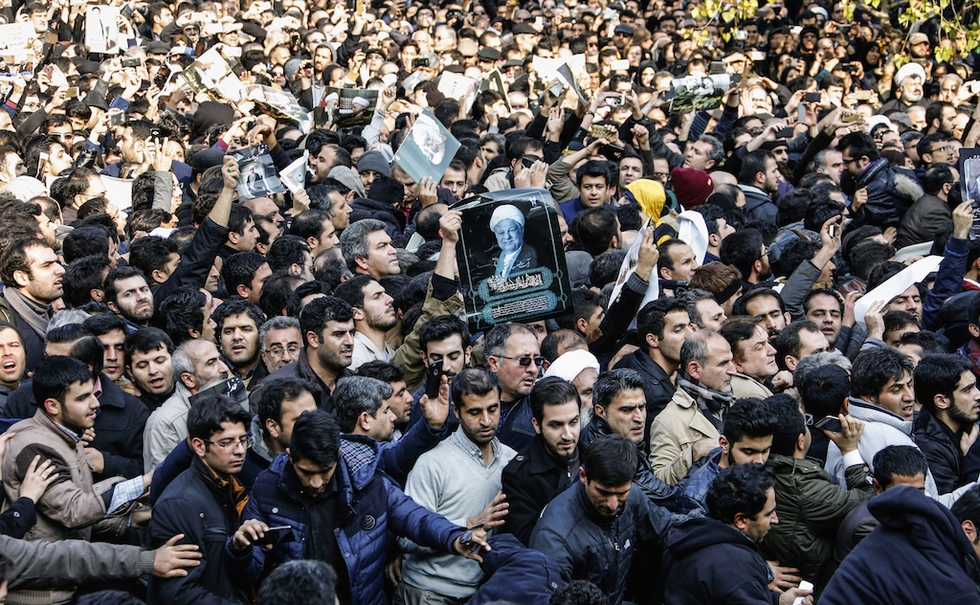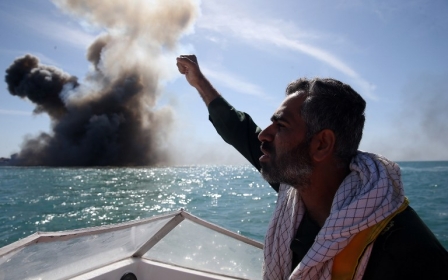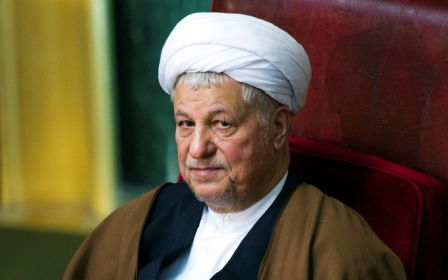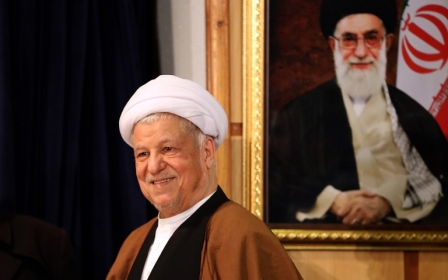Iranian reformists turn Rafsanjani burial into anti-state protest

Iran’s reformists on Tuesday used the funeral of Ayatollah Hashemi Rafsanjani to slam Russia, the Iranian establishment’s ally in Syria, and to call for the release of prominent reformist leaders in Iran.
Thousands of protesters chanted “death to Russia”, and “the Russian embassy is a den of spies” - chants usually reserved for use against the US, which the Iranian government views as its biggest enemy.
The crowds also called for Mir Mohammad Mousavi and Mehdi Karroubi, the leaders of the pro-democracy "Green Movement" to be released from house arrest.
Public protests against the Iranian establishment became impossible after reformists were brutally silenced during the presidential campaign in 2009 for protesting what they said was election manipulation.
But authorities were in no position to stop or control the millions that turned out in Tehran to honour Rafsanjani.
Rafsanjani was one of leaders most trusted by Ruhollah Khomeini, the founder of Iran’s Islamic republic. In the 1980s Rafsanjani was considered one of the most ruthless executors of the newly-formed regime’s opponents.
He used his position as parliament speaker to build his own power base and by the late 1980s was responsible directing the country’s war effort in its eight-year war against Iraq.
He was well-placed to take over the mantle of supreme leader after Khomeini’s death but his relatively lowly Islamic credentials of Hojat ol Islam at the time meant he was never fully in the running and he made sure his friend Ali Khamenei took on the mantle.
During the early 1990s, he represented the technocratic and pragmatic face of the Islamic republic during his two terms as the country’s president. He favoured Chinese-style economic liberalisation without ceding any control on the cultural and social front.
Within that scope Rafsanjani promoted dialogue with rival neighbouring states and even the US.
By the early 2000s, he had changed into a reformist and became an ardent backer of Iran’s Green Movement. This is believed to have been in large part due to the influence of his daughter Faezeh Rafsanjani, a staunch reformist who was jailed in the late 2000s.
As a result of this political shift he was barred from putting his name forward for the presidential race in 2009 by his erstwhile ally Khamenei.
As she arrived at her father's funeral, Faezeh Rafsanjani made a victory sign, known as a symbol of the reformist movement, to the thousands gathered.
Khamenei had decided to lead the prayer himself, meaning the Rafsanjani family were relegated to the back rows.
Former reformist president, Mohammad Khatami, who had become close to Rafsanjani after he became a reformist, was banned from attending the funeral.
White House sends condolence
Since Rafsanjani's death, messages of condolence have poured in both from at home and abroad.
Even the White House sent a message, unprecedented since the 1979 revolution that led to the cutting of ties between Tehran and Washington.
"Former president Rafsanjani was a prominent figure throughout the history of the Islamic Republic of Iran and the United States sends our condolences to his family and loved ones," spokesman Josh Ernest said.
"He was a consequential figure inside Iran. But you know, for what potential impact this could have on Iranian policy, I wouldn't speculate."
One of Iran's most controversial figures in the West, the head of its Revolutionary Guards' foreign operations division, Major General Qassem Suleimani, was seen at the funeral.
Rafsanjani's death is a blow to current President Hassan Rouhani as he prepares to seek a second term in May.
The incumbent president, seen in many circles as Rafsanjani’s protege, has come under mounting criticism from conservatives and hardliners over the so far disappointing economic dividends from the lifting of international sanctions under the 2015 nuclear deal.
New MEE newsletter: Jerusalem Dispatch
Sign up to get the latest insights and analysis on Israel-Palestine, alongside Turkey Unpacked and other MEE newsletters
Middle East Eye delivers independent and unrivalled coverage and analysis of the Middle East, North Africa and beyond. To learn more about republishing this content and the associated fees, please fill out this form. More about MEE can be found here.





